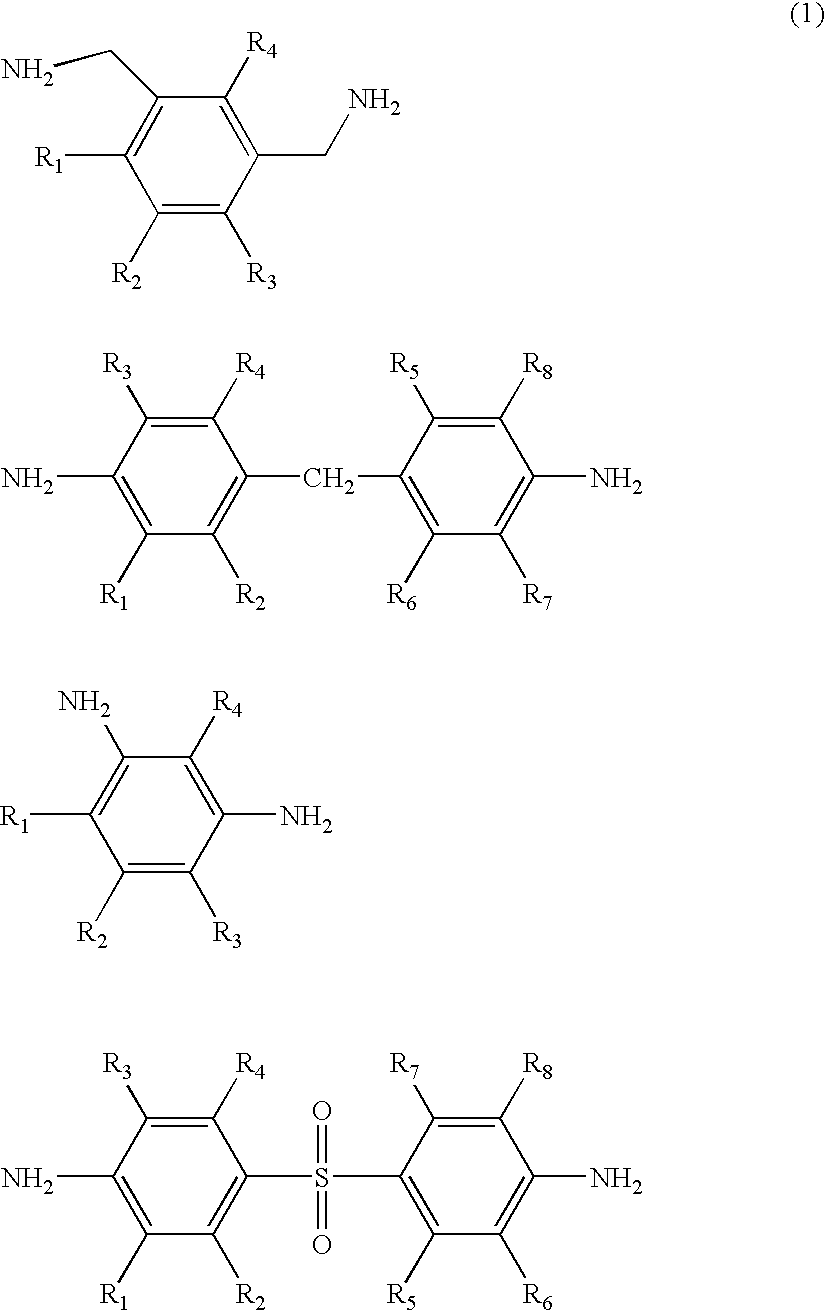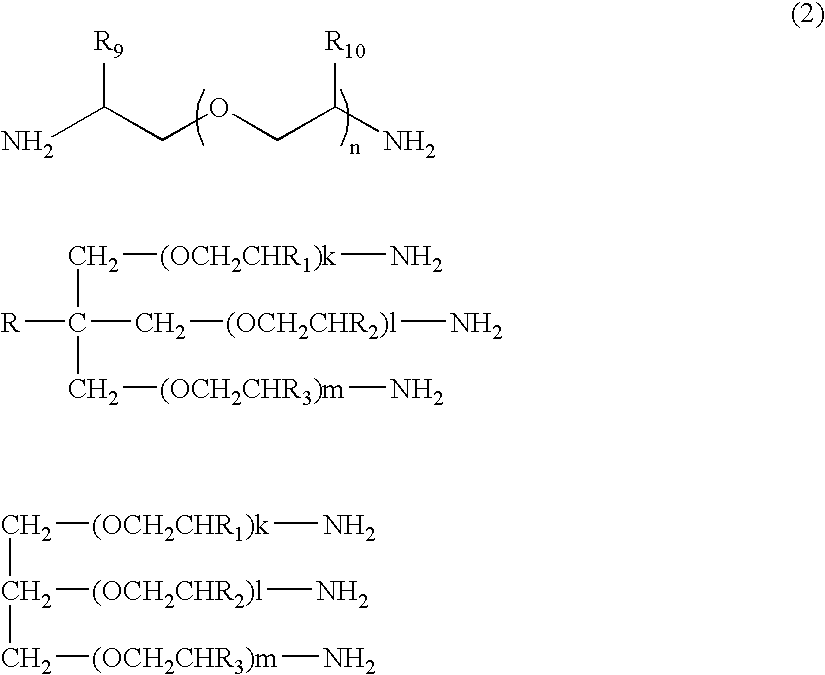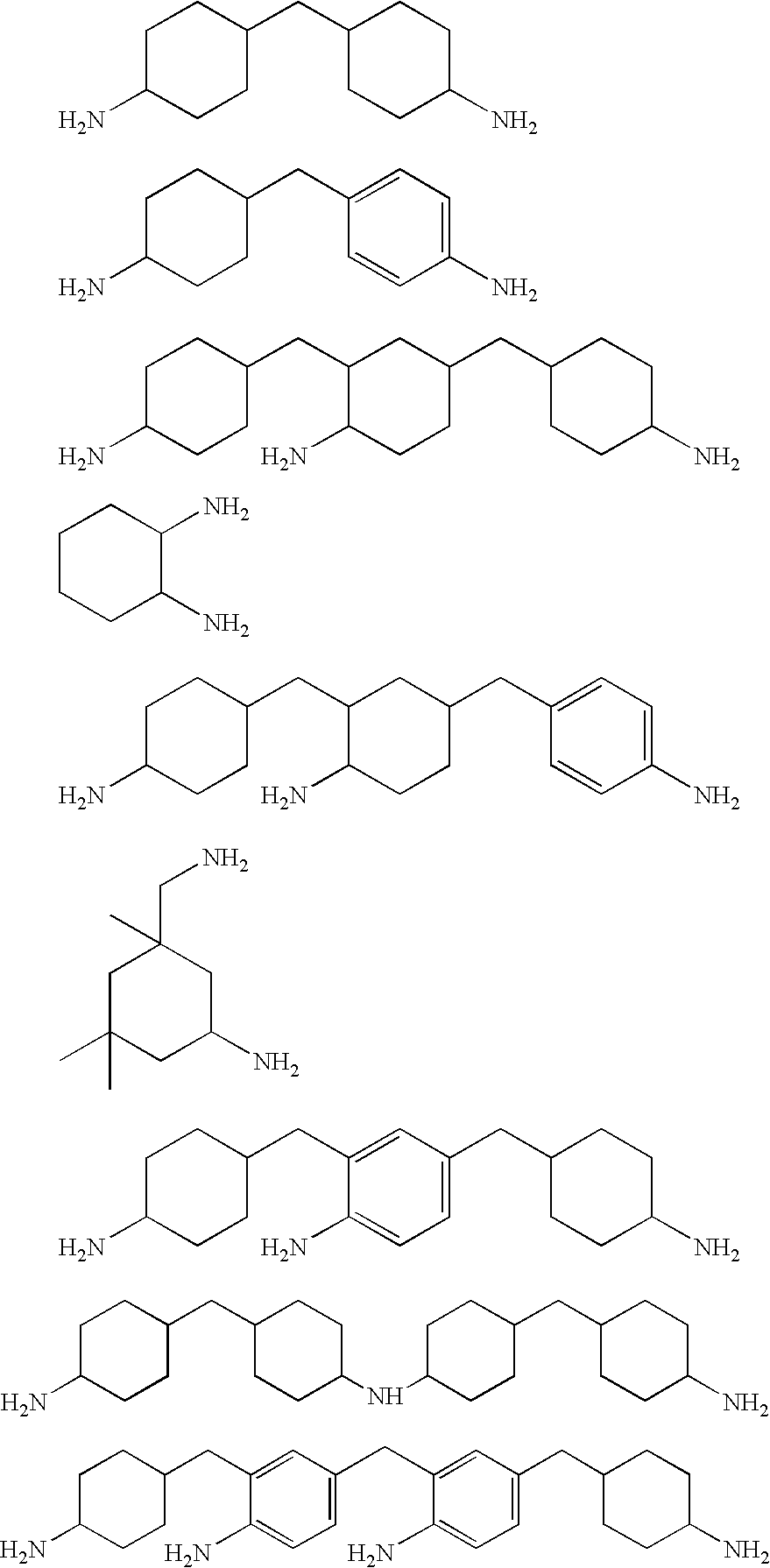Water dispersible silanes as corrosion-protection coatings and paint primers for metal pretreatment
a technology of corrosion protection coating and water dispersible silane, which is applied in the direction of coating, chemical apparatus and processes, organic chemistry, etc., can solve the problems of increasing restrictions on use, increasing the financial burden on the aluminum pretreatment industry, and chromium adding to the burden of chromium
- Summary
- Abstract
- Description
- Claims
- Application Information
AI Technical Summary
Benefits of technology
Problems solved by technology
Method used
Image
Examples
example 1
[0063]A 4:1 molar ratio of 3-glycidoxypropyltrimethoxysilane and C,C,C-trimethyl-1,6-hexanediamine (in favor of the silane) is added to an equal weight of ethyl alcohol. The alcohol used in this invention generally contains some water such as 0.5 wt. percent. The mixture is allowed to react at 70° C. for three hours. The reaction products are subsequently neutralized with a 20% excess (based on stoichiometry) of acetic acid. This multifunctional silane is referred to as TG14 hereafter, the molecules of the adduct polyamine-silane having about an average of four bonded silane groups.
[0064]Corrosion protection of unpainted aluminum alloys by the material TG14 was tested by the conditions of ASTM B117 salt spray. A 5 weight percent solution or dispersion of TG14 in water was applied to various panels of various aluminum alloys. The resulting film on the alloy of diamine-silane was dried in a baking oven at 250° F. for twenty minutes. Then, the various panels were placed into contact wi...
example 2
[0065]A mixture of 3-glycidoxypropyltrimethoxysilane and C,C,C-trimethyl-1,6-hexanediamine at a 3:1 molar ratio in favor of the silane was added to an equal weight of methyl alcohol, with stirring. The mixture was allowed to react at 60-80° C. for about 3 hours or, alternatively, at room temperature for about 48 hours. The reaction products are subsequently neutralized with a 20% excess (based on stoichiometry of acetic acid. This multifunctional silane is referred to as TG13 hereafter.
[0066]Upon application to aluminum panels in a manner similar to Example 1, anticorrosion effect to a lesser degree from that of Example 1 was seen relative to the 3105 alloy and the 3003 alloy.
[0067]A. However, panels of aluminum alloy 1100 and 6061 were respectively treated with 1% water solutions of TG13 and TG14 (Examples 2 and 1) and allowed to conventionally cure with ten minutes exposure to air at 160° F. Following this, the cured panels were respectively powder coated to a depth of 0.003″ with...
example 3
[0073]A mixture of 3-glycidoxypropyltrimethoxysilane and 1,10-decanediamine at a 4:1 molar ratio in favor of the silane was added to an equal weight of methyl alcohol, with stirring. The mixture was allowed to react at about 60-80° C. for about 3 hours, or alternatively at room temperature for about 48 hours. This multifunctional silane is referred to as DG14.
[0074]An aluminum 2024 alloy panel was coated and tested in the manner of Example 1 for corrosion using DG14. The coated panel with DG14 withstood three days of salt spray treatment, compared with zero days for a coating free corresponding aluminum panel, and 7 days for a conventional commercial chromate coating.
PUM
| Property | Measurement | Unit |
|---|---|---|
| temperatures | aaaaa | aaaaa |
| temperatures | aaaaa | aaaaa |
| thickness | aaaaa | aaaaa |
Abstract
Description
Claims
Application Information
 Login to View More
Login to View More - R&D
- Intellectual Property
- Life Sciences
- Materials
- Tech Scout
- Unparalleled Data Quality
- Higher Quality Content
- 60% Fewer Hallucinations
Browse by: Latest US Patents, China's latest patents, Technical Efficacy Thesaurus, Application Domain, Technology Topic, Popular Technical Reports.
© 2025 PatSnap. All rights reserved.Legal|Privacy policy|Modern Slavery Act Transparency Statement|Sitemap|About US| Contact US: help@patsnap.com



